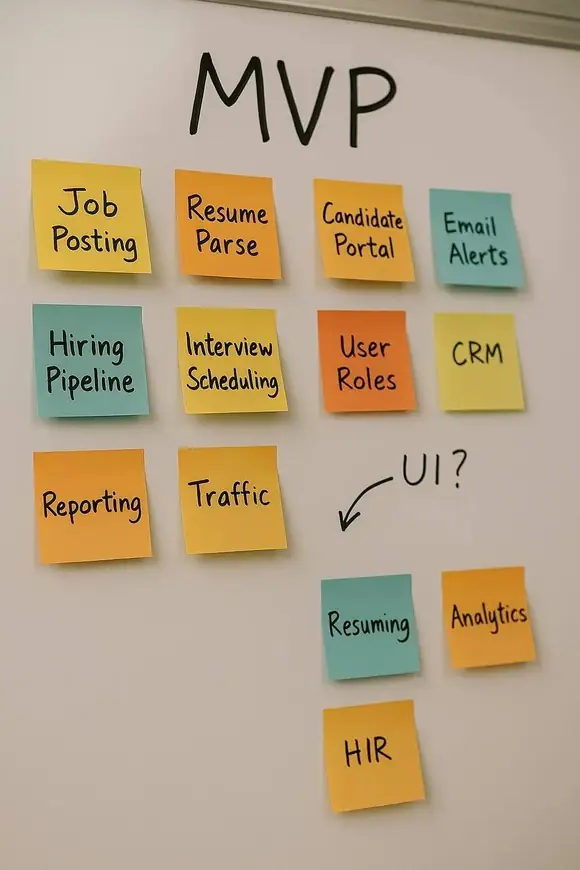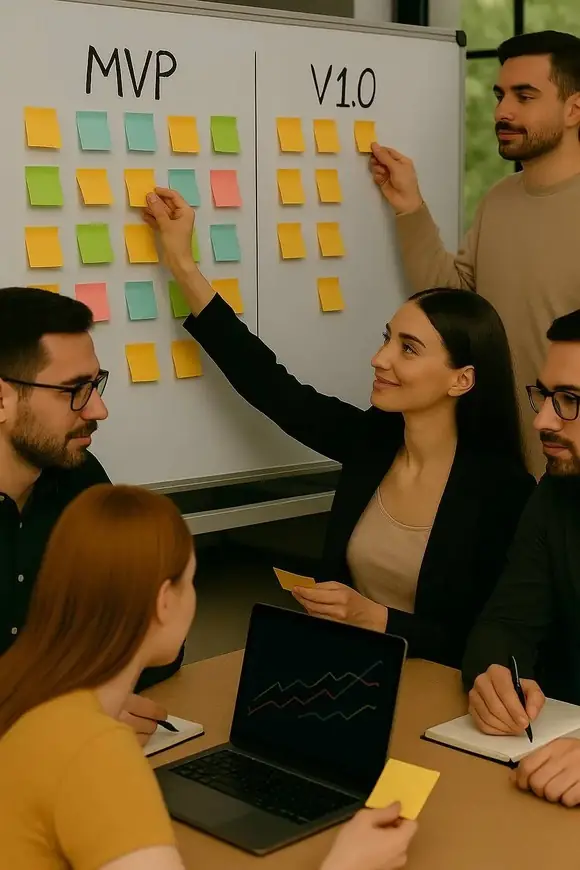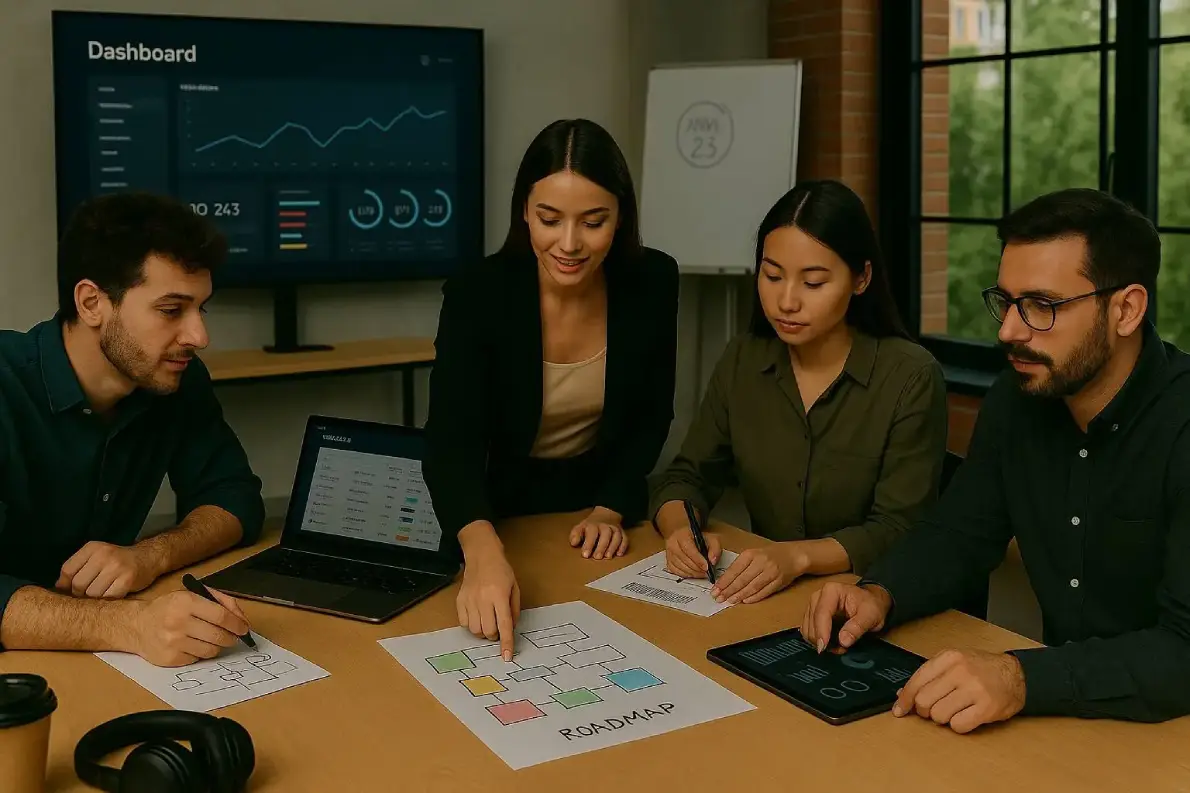Building an MVP is a milestone. It means an idea took shape, reached real users, and delivered some form of value. But moving from MVP to a scalable product isn’t just about adding features or rewriting code—it’s about growing with intention. Many teams face this shift without clear priorities, trying to scale decisions made in an earlier stage, or freezing up from not knowing what to keep and what to rework.
The Lean methodology—adapted from industrial manufacturing to the world of digital products—emphasizes validated learning over perfect execution. Instead of investing heavily in a fully built product upfront, Lean thinking encourages building the minimum needed to learn something concrete from the market or users.
Its central tool is the MVP (Minimum Viable Product), not as a lightweight version of the final product, but as a functional experiment that helps confirm or reject a core hypothesis about the business.
The goal of the MVP is to begin the process of learning, not end it. Unlike a prototype or concept test, an MVP is designed not just to answer product design or technical questions. Its goal is to test fundamental business hypotheses.
There’s often confusion about what an MVP is meant to do. Many see it as the first technical version of the product—something to build upon. But if we follow the Lean definition closely, the MVP isn’t designed to be scaled. It’s designed to be validated.
In theory, an MVP could be entirely discarded after fulfilling its role, because its true value lies in what it teaches—not in what it builds. In practice, though, that doesn’t always happen. Teams often scale on top of their MVPs, due to time, budget, or strategic decisions made early on. That’s not necessarily a problem, as long as the team is aware of the trade-offs and reevaluates what should carry forward and what shouldn’t.
The key is not whether the MVP is reused or rebuilt—it’s whether it delivers a real, testable version of the idea. Something that users can actually experience. That’s why a common analogy is to build a bicycle first—not just a wheel. The idea is to solve the core need from day one, even in a simple way. If that works, you can evolve into a motorbike or car. But the learning comes from something functional, not from assembling disconnected parts.


There’s no universal formula for moving beyond an MVP, but some perspectives can help bring clarity. A good next step starts with revisiting what actually validated a user need, what decisions were made for speed and may now limit growth, and what can stay intentionally simple without harming the experience. It’s also worth asking whether the current team is equipped for the next stage—or if bringing in new capabilities will help avoid common pitfalls. In some cases, designing an intentional "post-MVP" version—more robust but still agile—can create the foundation for growth without having to rebuild everything later.
Every product has its own journey, but there are common areas that often require attention when scaling:
- Architecture and performance: MVPs usually aren’t built for scale. Improving modularity or infrastructure may help depending on the context.
- User experience: What early adopters tolerate may confuse a broader audience. Small UX issues can become blockers as your user base grows.
- Operational tools: Admin panels, internal dashboards, support tools—often missing in MVPs—become essential for scaling operations.
- Monitoring and reliability: Logging, alerts, fallback mechanisms.These may seem excessive early on but become critical as usage increases.
At the same time, certain elements are usually better left unchanged:
- The value proposition: If it’s been validated, it’s what holds the product together. Expanding too quickly can dilute what makes it work.
- User proximity: MVPs often benefit from direct user feedback. Keeping that feedback loop alive helps the product stay grounded.
- Simplicity: Growth doesn't have to mean complexity.Staying focused is still key at scale.

At neo301, we work with teams who already have an MVP in place, as well as those preparing to build one for the first time. In both cases, our focus is to understand the context, validate what matters, and define a roadmap that’s grounded but adaptable.
Our role isn’t just to “scale what exists.” It’s to pause and think. We help assess what’s worth keeping, what should be restructured, and how to move forward in a way that supports both current needs and long-term growth.
We believe scaling isn’t about starting over—it’s about building with purpose on top of what you’ve already learned.
It starts with understanding
Business executive with an MBA from IAE Business School and a background that spans over 12 years in the corporate world, entrepreneurship, and business consulting. Founded his own startup and has helped companies across industries align their real needs with effective digital solutions. Specialized in bridging business strategy with technology execution, supporting organizations throughout the entire product development process. Brings a business-first mindset, with a strong focus on impact, alignment, and long-term value.
